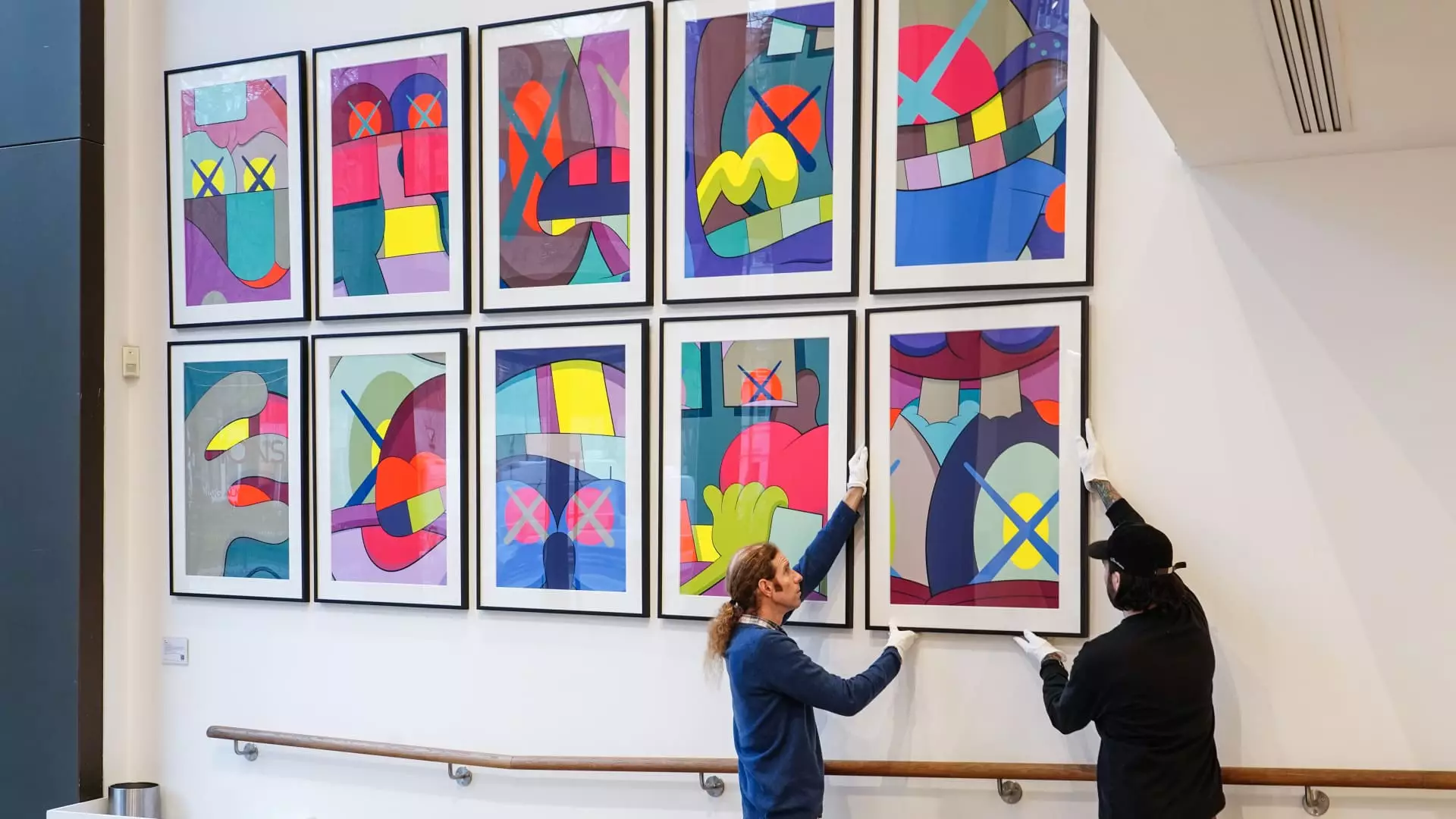For years, the art market was heralded as the ultimate symbol of wealth existence—an insatiable beast that continually soared, defying economic downturns and market fluctuations. However, recent data shatters this myth, revealing a disturbing trend: auction sales are plummeting for three consecutive years. The decline, reaching a staggering 44% from 2022, exposes the fragility of what many perceived as an immutable pillar of high-net-worth investment.
This isn’t a simple temporary slump driven by lagging consumer confidence; it’s a sign that the glamourized narrative of relentless art market expansion is crumbling before our eyes. For so long, critics and insiders alike believed that the art world was insulated from the chaos of broader economic fluctuations. Today, that delusion fades as the art market’s decline underscores its vulnerability—not as an economic engine, but as a reflection of changing societal and generational values.
The diminishing sales, especially in postwar and contemporary art, point toward a deeper issue. These segments fueled the art market’s recent growth spurt, yet now they are hit hardest, suggesting that the very demographics driving the newfound demand might be losing interest. If the core collectors and investors that kept the market alive begin to retreat or downsize, the future of high-priced art may be more precarious than any boom-time forecast suggested. It’s a wake-up call—what once appeared an unstoppable train is now grinding to a halt.
The Wealth Paradox: Prosperity Without Equivalent Cultural Investment
While art markets wane, wealth among the richest Americans is reaching unprecedented heights—adding trillions of dollars to their holdings in recent years. Paradoxically, this surge in personal wealth does not translate into robust art sales. For wealthy individuals, portfolios are expanding through stocks, real estate, startups, and alternative assets. Yet, their engagement with traditional collecting—particularly high-value art—is waning.
This disconnect is telling. Theories that link economic affluence to art demand now rest on shaky ground, primarily because the cultural practices of the new generation diverge sharply from those of their predecessors. The boomers, who accumulated vast art collections, are now aging, downsizing, and selling their holdings—sometimes simply because their children lack the interest or cultural literacy to value these pieces. The next generation, Millennials and Gen Z, are digital natives raised in a world of instant gratification and social media, where art is more ephemeral, more fluid, and often less ‘valuable’ in traditional terms.
The theory that art prices reflect overall wealth might hold in a historical context, but the current divergence suggests something fundamental has shifted. Wealth remains high, yet the cultural capital once associated with collecting art appears less relevant to today’s affluent youth. Entirely new social dynamics are perhaps at play—digital culture, streaming, NFTs, and social media platforms are substituting traditional forms of high art. It’s not merely a cyclical market correction but a signal of societal transformation—one that calls into question whether our existing definition of success, taste, and cultural capital is even relevant anymore.
Generational Change: A Fundamental Shift in Artistic Taste and Investment
The so-called “generational shift” isn’t just passing rhetoric; it is a seismic transformation in how wealth is spent, invested, and valued. Millennials and Gen Z are less enamored with the art of their predecessors, especially the iconic works of 20th-century masters. Their tastes are more eclectic, more accessible, and often digitally centered. Buying a piece of timeless art at auction isn’t really on their radar—they prefer smaller, more affordable collectibles or digital assets that feel more aligned with their world.
This shift impacts the entire landscape of the high-end art market. The explosion of sales in jewelry, watches, and luxury collectibles during the decline of traditional art reflects this new reality. Wealth is still being accumulated, but it’s flowing into different areas—things that can be enjoyed immediately, shared online, and often carry a different cultural significance than paintings and sculptures.
Auction houses have responded by pivoting—placing more emphasis on online sales, luxury jewelry, and lower-priced works. Yet these strategies only reveal the depth of the crisis: traditional art’s top-tier market is contracting dramatically, particularly with works priced over $10 million. Meanwhile, the market for affordable art under $50,000 is flourishing, starkly illustrating the divide between elite collectors and the broader, digitally savvy younger populace.
This differentiation signals a potential realignment of what constitutes “valuable” art. It questions whether the old elite-driven model is still relevant or if it is giving way to a new paradigm rooted in accessibility, digital exchange, and personal taste. If that’s the case, the entire structure of the high-value art economy—its auctions, galleries, and elite collectors—is at a crossroads, facing the possibility of a radical transformation that might redefine the very essence of cultural and financial capital.

